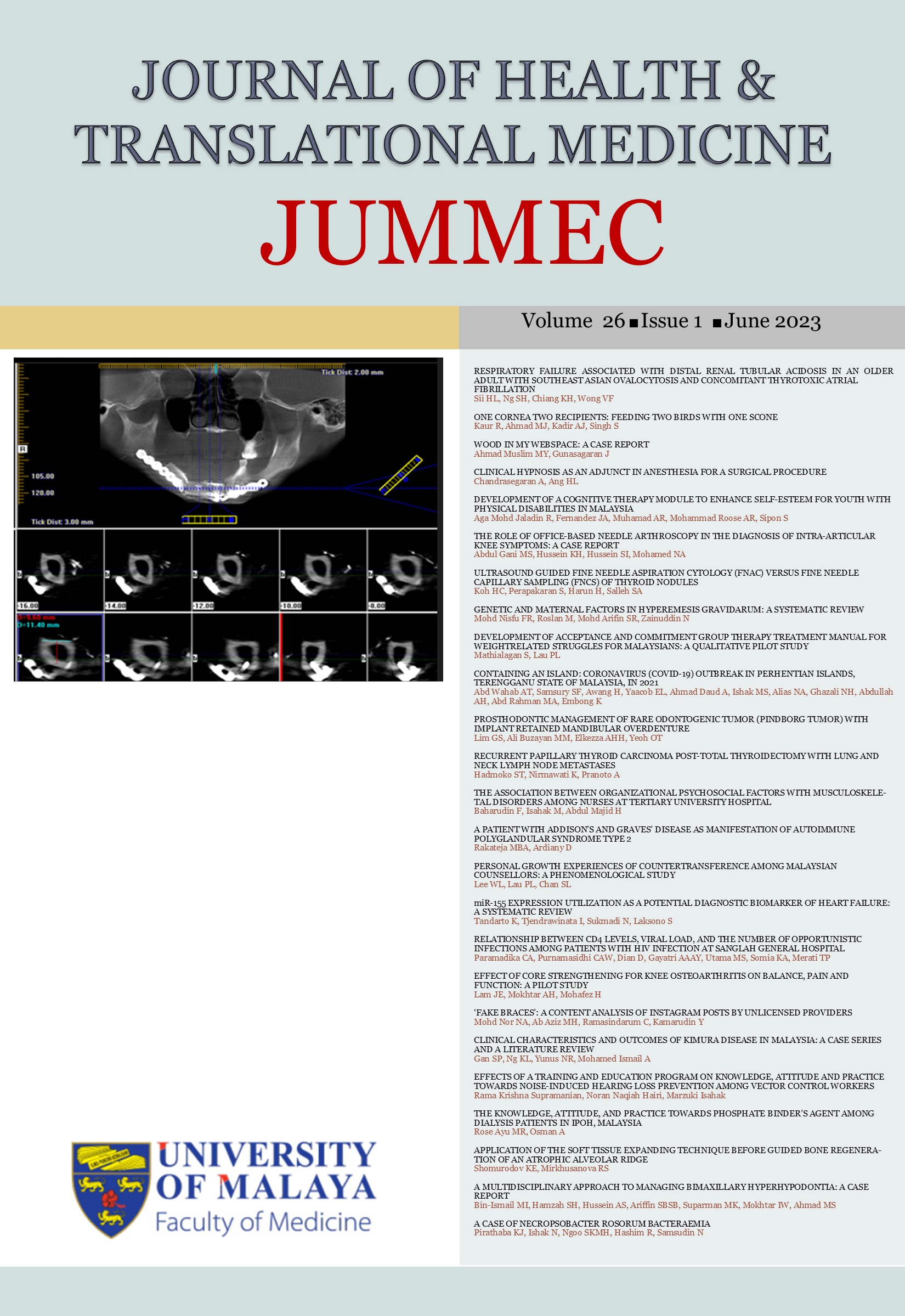A CASE OF NECROPSOBACTER ROSORUM BACTERAEMIA
Received 2023-02-10; Accepted 2023-03-21; Published 2023-05-22
DOI:
https://doi.org/10.22452/jummec.vol26no1.25Keywords:
bacteremia, Pasteurellaceae, Necrospobacter rosorum, MALDI TOF, intraabdominal abscessAbstract
Necropsobacter rosorum (N. rosorum) is a gram-negative organism previously classified under the family Pasteurellaceae. It has been isolated from the gastrointestinal and respiratory tracts of mammals. On the other hand, there is very little information available about how N. rosorum infects human. Due to a paucity of information in the database, commercial identification methods such as VITEK identification system or Analytical Profile Index (API) frequently misidentify this organism. Thus, it is a challenge for laboratories to accurately identify N. rosorum. By using matrix-assisted laser desorption/ionisation time-of-flight mass spectrometry (MALDI-TOF), we were able to identify N. rosorum in a patient with sepsis secondary to wet gangrene of the left big toe. This case report aims to shed light on the application of advance diagnostic tests for the early detection of human pathogens.
Downloads
Downloads
Published
Issue
Section
License
All authors agree that the article, if editorially accepted for publication, shall be licensed under the Creative Commons Attribution License 4.0 to allow others to freely access, copy and use research provided the author is correctly attributed, unless otherwise stated. All articles are available online without charge or other barriers to access. However, anyone wishing to reproduce large quantities of an article (250+) should inform the publisher. Any opinion expressed in the articles are those of the authors and do not reflect that of the University of Malaya, 50603 Kuala Lumpur, Malaysia.


